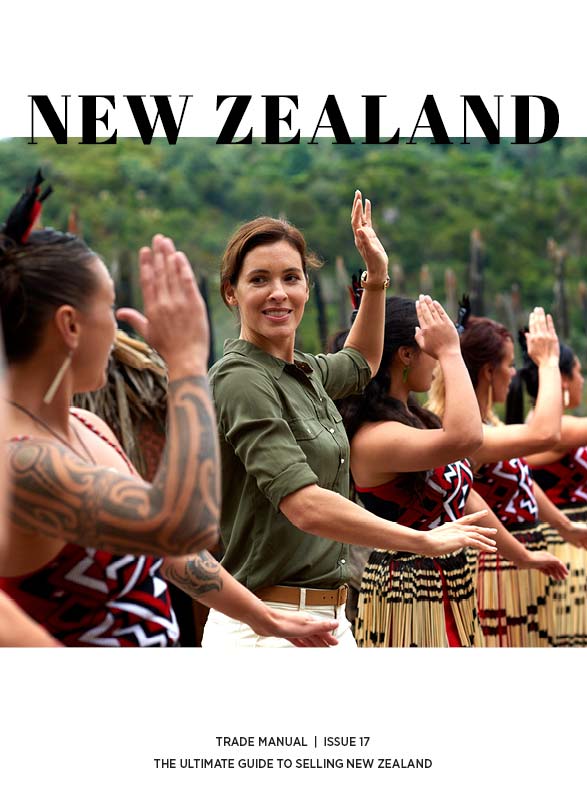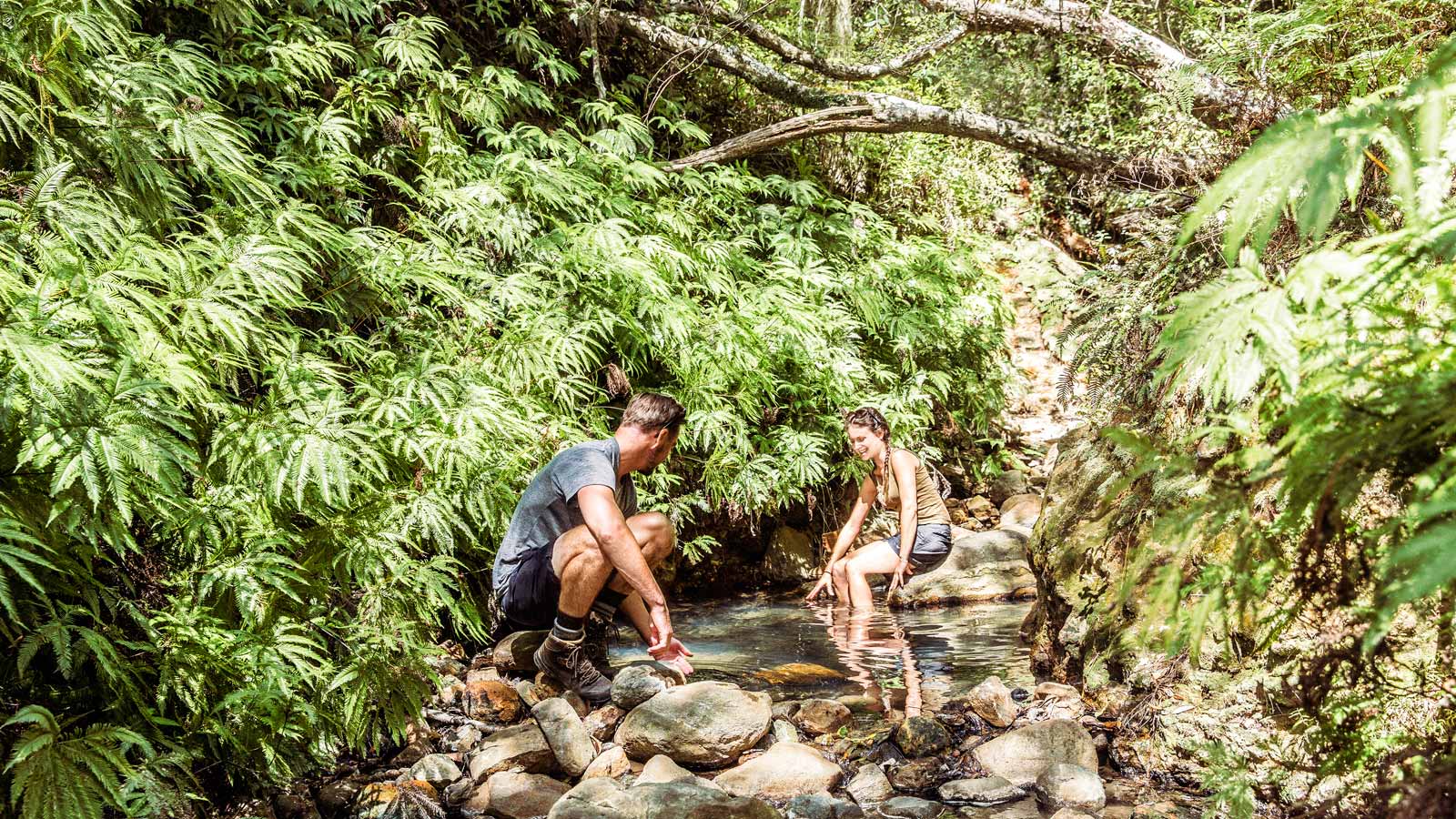Māori are thought to have arrived in New Zealand over 700 years ago after travelling by canoe from a South Pacific homeland known as Hawaiki. They named their new home Aotearoa, ‘Land of the Long White Cloud,’ and developed a thriving society. The earliest Māori lived a hunter-gatherer existence, but over time they settled into larger communities, growing kumara (sweet potato) and yams, and gathering birds, fish and shellfish. The Māori population may have been as high as 100,000 prior to European settlement.
The first European to discover New Zealand was Dutch explorer Abel Tasman. On 13 December 1642 his ships sighted the Southern Alps and anchored in Golden Bay, near present-day Nelson. It was more than 100 years later that Briton Captain James Cook visited New Zealand. On 6 October 1769 his cabin boy sighted land near Gisborne and Cook went on to circumnavigate and map the country.
New Zealand became a popular base for South Pacific explorers. Whalers, sealers and traders in timber and flax soon followed and by 1839 there were about 2,000 Europeans in New Zealand. In 1840 Captain William Hobson was sent to New Zealand as Lieutenant-Governor, charged with acquiring sovereignty through a treaty with Māori chiefs. On 6 February 1840, at Waitangi in the Bay of Islands, the Treaty of Waitangi was signed. Although there are continuing debates about the proper interpretation of the Treaty, it is considered New Zealand’s founding document.
Once New Zealand was a British colony, British migration accelerated, and gold rushes during the 1860s attracted more migrants. Independence from Britain was formally proclaimed in 1947 and in the 1970s a large number of Pacific Island immigrants settled in New Zealand. Today, New Zealand has developed its own unique culture – a mix of those who have settled the country throughout the centuries.
The Treaty Of Waitangi
New Zealand’s founding document was signed by 40 Māori chiefs at Waitangi on 6 February 1840. The Treaty saw Māori cede sovereignty to the British Queen, affording them the rights of British subjects in return. Copies were circulated around the country and 500 chiefs had signed by September 1840.
Experiencing The Past
Travel back in time and unearth ancient traditions, colourful culture and rich heritage on your journey through New Zealand.
Museums New Zealand’s museums exhibit a vast array of fascinating collections and many offer interactive displays. The Auckland Museum is known for its Māori and Polynesian artefacts, while the Otago Museum focuses on the South Island’s history, and various local museums explore the Gold Rush era. Specialist museums display collections of classic cars, steam engines and planes, toys or fashion from days gone by. History comes alive at recreated pioneer towns like Shantytown, near Greymouth.
Heritage Trails Heritage trails are to be found in cities and rural areas and they may be included as part of a tour or self-guided (brochures for the latter are available at local i-SITEs). Especially renowned paths include Napier’s Art Deco Walk, Dunedin’s Heritage Walks, Wellington’s Old Shoreline Heritage Trail, the Otago Goldfields Heritage Trail and the Vanished World Trail in the Waitaki District.
Heritage Sites New Zealand’s most important heritage site is at Waitangi, but dotted around the country are other significant sites such as war memorials, Māori pa sites and abandoned mining settlements. Former gold-mining towns like the Arrowtown Chinese Settlement and the eerie ghost towns of Macetown and Bendigo in Otago, or once-bustling coal-mining towns like Denniston on the West Coast of the South Island, are interesting places to explore.
Historic Buildings Historic buildings are all over New Zealand, but Art Deco Napier and Oamaru’s whitestone architecture are highlights. Auckland has grand old homes, while Wellington has the nation’s oldest suburb (Thorndon) and the world’s largest all-wooden structure; the 1876 Government Buildings. The Gothic revival stone buildings of Christchurch’s have always been a drawcard. Sadly many of these were damaged or lost in the earthquakes of 2010/11, but visitors now have the chance to see history in the making! Dunedin’s historic gems such as Larnach Castle and the Railway Station (perhaps New Zealand’s most photographed building) are not to be missed.
Cultural Encounters Tour operators such as Tamaki Heritage Experiences let visitors travel hundreds of years back in time over the course of an afternoon or evening. Engaging ceremonial rituals, re-enactments of history, powerful performance art and traditional Māori feasts offer a unique insight into long-ago times.
Timeline
1642 Abel Tasman anchors at Golden Bay.
1769 NZ is sighted by Captain James Cook aboard the Endeavour.
1840 The Treaty of Waitangi is signed.
1854 NZ’s first Parliament sits in Auckland (it later moves to Wellington).
1868 The first Māori MPs, Frederick Nene Russell and Tareha Te Moananui, are elected to Parliament.
1884 The first representative NZ rugby team tours New South Wales in Australia.
1893 NZ becomes the first country in the world to allow women to vote.
1908 Ernest Rutherford wins the Nobel Prize in Chemistry.
1931 The Hawke’s Bay Earthquake destroys much of Napier and Hastings, killing over 250 people.
1945 Charles Upham, NZ’s most decorated soldier, is awarded a Victoria Cross and Bar for services in WWII.
1947 Independence from Britain is formally proclaimed.
1953 Sir Edmund Hillary and Sherpa Tenzing Norgay conquer Mt Everest.
1974 The Commonwealth Games are held in Christchurch.
1981 The Springbok rugby tour sparks countrywide protests against apartheid.
1987 The New Zealand Nuclear Free Zone, Disarmament and Arms Control Act is passed into law, establishing New Zealand as a nuclear weapon-free zone.
1999 Filming of The Lord of the Rings trilogy starts.
2004 Māori Television begins broadcasting.
2010/11 Major earthquakes shake Christchurch.
2011 The All Blacks win the New Zealand-hosted Rugby World Cup.
2013 Same-sex marriage is legalised.
2016 The Kaikoura earthquake damages major South Island road and rail routes and Wellington buildings.
2017 Emirates Team New Zealand wins the America’s Cup.
Find Out More
The Penguin History of New Zealand by Michael King (Penguin Books, 2003)
Making Peoples: A History of the New Zealanders: From Polynesian Settlement to the End of the Nineteenth Century by James Belich (Allen Lane/The Penguin Press, 2001)
A History of New Zealand by Keith Sinclair. Fifth Edition. (Penguin Books, 2001)
A Traveller’s History of New Zealand and the South Pacific Islands by John H. Chambers (Interlink Books, 2004)
Kiwi Speak by Justin Brown (Random House, 2008)
New Zealand history online www.nzhistory.govt.nz
New Zealand’s identity, stories, achievements and place in the world www.nzedge.com
The Encyclopedia of New Zealand www.teara.govt.nz
Te Manatu Taonga Ministry for Culture and Heritage www.mch.govt.nz
NZ news www.stuff.co.nz

